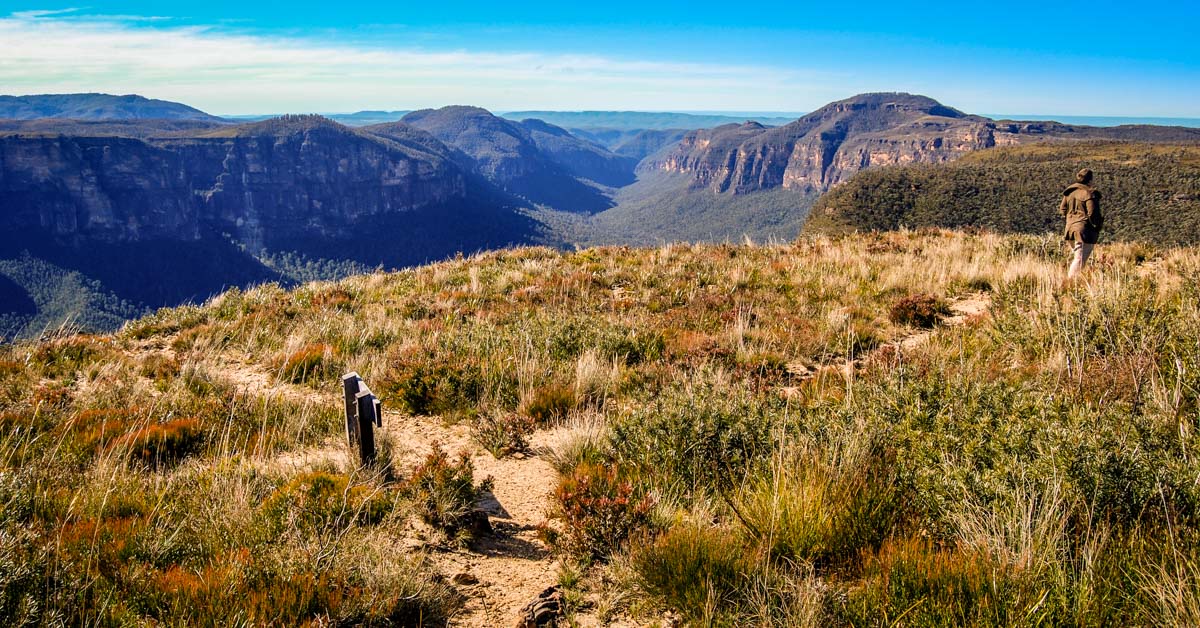At some point in your photography and video career, you’re going to need a permit.
Think what you will of these little slips of permission, applying for permits is a key part of pre-production for any shoot. Depending on what state you’re in, you’ll need a permit to do any commercial filming or photography in Australian national parks. The laws vary from state to state and change over time. Although this isn’t the most glamourous topic, it’s an important one.
Am I a commercial photographer?
If you sell or make money from your photography such as stock sales or prints, or you’re photographing to promote a business or product, you’re a commercial photographer. One of my biggest regrets is that I didn’t get permits earlier in my career when I was starting out – I’ve got a bunch of national park photography I can’t use commercially. Even though you might not be selling anything yet, if you might go commercial in the future, you should get a permit.
So how do I actually get a filming and photography permit?
Thankfully getting permits in Australian national parks is a straightforward process. Most parks have different permits depending on what type of crew you have – from TV and films to small-scale landscape and wedding photography.
I usually get a commercial small-scale photography permit as it’s often myself, my tripod and camera. Investigate permits two months before a shoot to provide enough processing time, especially if it’s near public holidays or the New Year. Western Australia requires at least six weeks’ notice, so it pays to start early.
Be clear in your application what you’re going to do. In the application I will outline exactly what I’m doing and what the likely uses are.
While many of the national parks charge fees, some will waive the fees if there is a benefit to tourism. It’s worthwhile mentioning if you have a blog and will write an article about the national park, or you’re selling travel photography online. It may not waive the fee for you, but it doesn’t hurt to ask.
You’ll also need to agree to the guidelines and restrictions of your permit. If you’re unsure of anything, email the permit provider to ask before applying.

What you’ll need to get a permit
Public Liability Insurance – PLI is essential for anyone working as a photographer or video producer. It doesn’t matter if you’re only starting out in your career, you should get it. Many places won’t let you shoot commercially if you don’t have insurance. I get mine through PPIB, but there are plenty of other providers. http://www.photoinsurance.com.au/
You will often need to name the Department of Environment or similar in your Certificate of Currency, which you can get by emailing your insurance provider. Check in the guidelines for each state below.
Location and shooting plan – I understand it’s hard to schedule landscape photography in advance, but you’ll need to provide general locations and dates to the National Parks Service. Allow a couple of extra days either side of your application in case of inclement weather.
Australian Business Number – if you’re a business in Australia, you should have an ABN already.
Drones and UAVs
Many Australian national parks are very strict on Drone and UAV usage, even for amateur or non-commercial use. Make sure you check before you fly – I wouldn’t want you to get hit with a hefty fine.
Photographing Aboriginal and Torres Strait Islander sites
There are many sacred sites for Aboriginal and Torres Strait Islander people in Australia, especially in national parks. The most famous of these are Uluru – Kata Tjuta and Kakadu national parks, which are icons of the Australian landscape. It’s important that landscape photographers show respect for these places – after all, we are walking on their land.
I go into more detail about these specific parks below, but in other instances you may also need to get special permission to photograph or film areas from the Department of Aboriginal Affairs or local leaders. Be aware of the significance of these places, especially the laws regarding Aboriginal rock art and heritage sites.
State by State guidelines
Here’s a list of links to each state’s page on national park photography and filming permits. Before I start, please make sure you check these details are up to date before you go! While I’ll do my best to keep these links up to date, policies and regulations are always changing. It’s up to you to find out what you need for your specific circumstances.

Australian Capital Territory
The ACT is very small, so the only national park is Namadgi National Park. I can’t find any details on photography permits, but you may wish to check closer to your shoot date.
New South Wales
You’ll need a permit, but there are specific permits for small-scale filming and photography. Read more on their policy and permit application pages.
Northern Territory
You’ll need to pay special attention to Northern Territory guidelines as there are many Aboriginal sites in this state. An overview of guidelines is available here.
For general commercial photography and filming in national parks you’ll need a permit.
There is a more detailed breakdown of Aboriginal sites here, which include many of the sites where commercial photography or filming is not permitted.
You can find more information on commercial filming permits for Uluru-Kata Tjuta National Park and Kakadu National Park online.
Queensland
Crews of less than ten people don’t need to apply for a permit as long as you use none of their prescribed structures (which includes UAVs over 2kg). Just makes me want to go to Queensland and film stuff! Check your crew and shoot against their regulations on their website.
If you are travelling in the Torres Strait Islands, please be mindful of local traditional owners and the land.
South Australia
South Australia has an annual photography permit for small-scale commercial work available on their site with more details and guidelines for individual parks here.
Tasmania
You’ll need a permit, but I found getting one for Tasmania to be straightforward. I applied for one before I hiked the Overland Track and it didn’t take long to get processed. Guidelines and form are here.
Victoria
You will need a permit for all commercial filming and photography. Permits and guidelines are on their website.
Western Australia
Again, you’ll need a permit for filming and photography. Guidelines and application forms.
Commonwealth Parks and Reserves
There are certain parks that require filming and photography permits at a commonwealth level, which include places like Christmas Island and Norfolk Island National Parks, and Uluru-Kata Tjuta National Park and Kakadu National Park. More details on these special places can be found here.
General Tips
You’ll also need to get national park entry, hiking and camping permits aside from your photography permit – just because you got a photography permit doesn’t mean you can just pitch your tent at any site!
Finally, follow the same rules for photography in national parks as you would hiking – Leave No Trace! Don’t go bush-bashing with your tripod, cutting down ‘unattractive branches’ or leaving trash from your shoot.
As you can see, getting photography and video permits for Australian national parks varies a lot from state to state, but with a little forward planning and professionalism you can get those permits.



